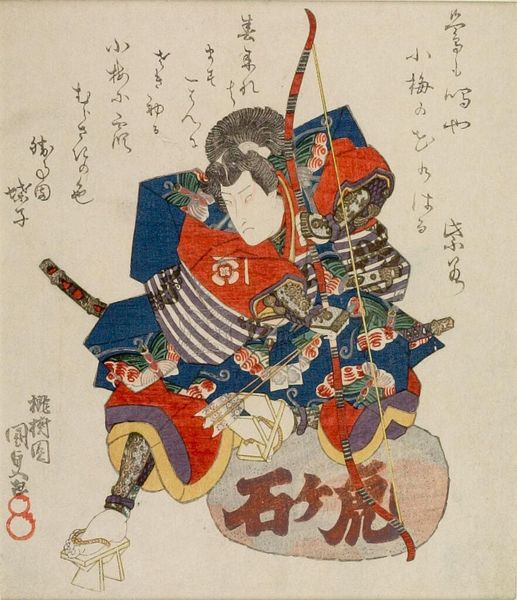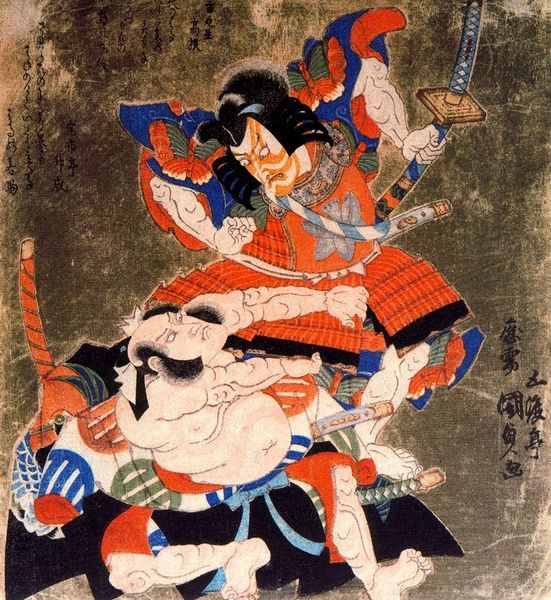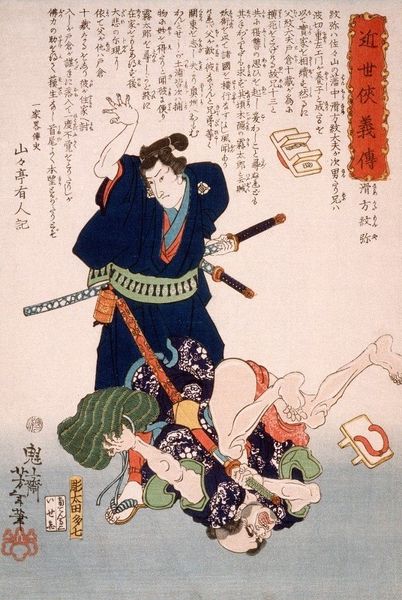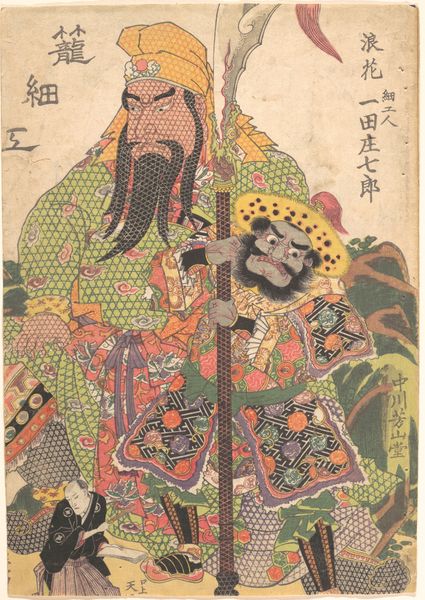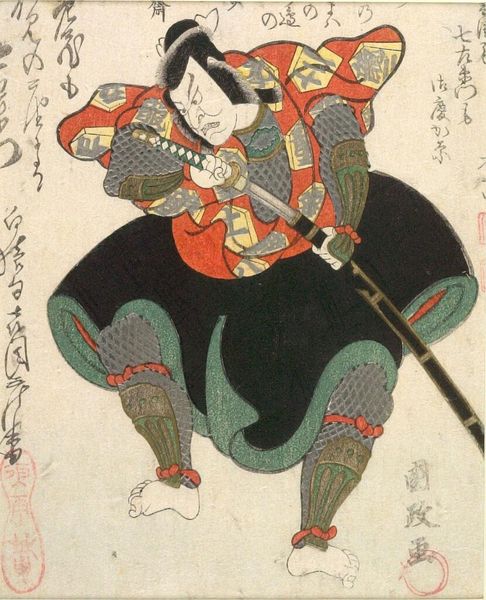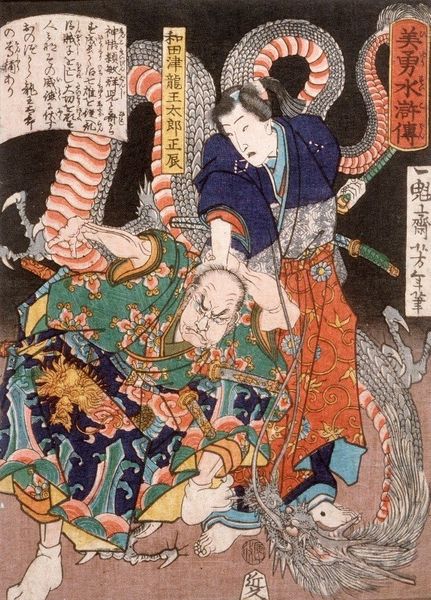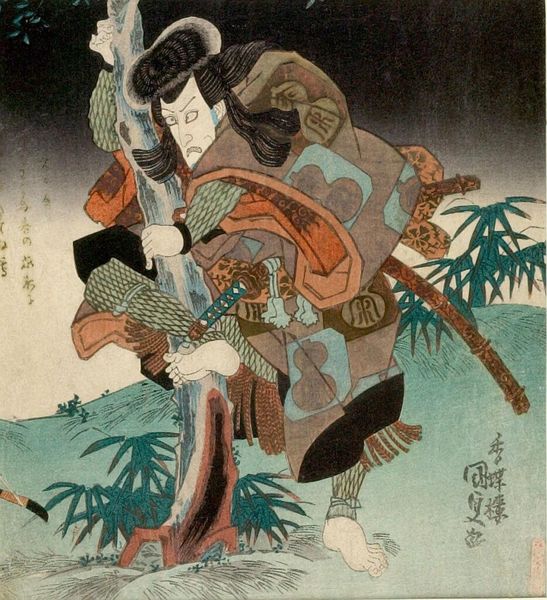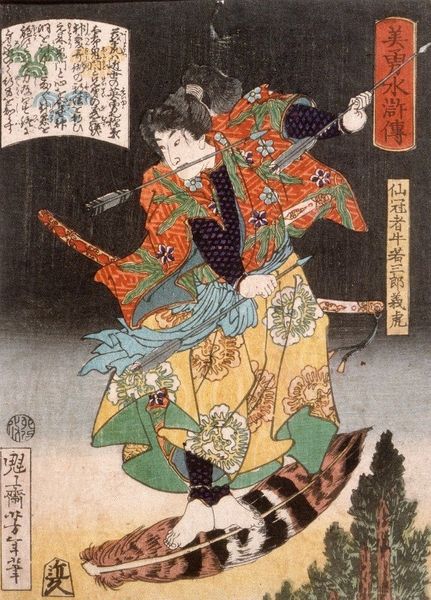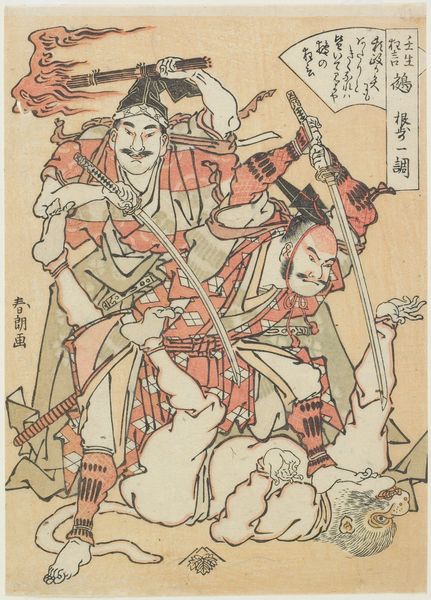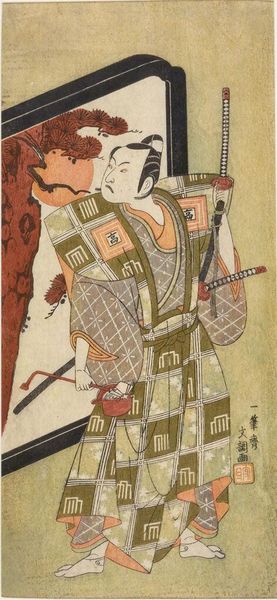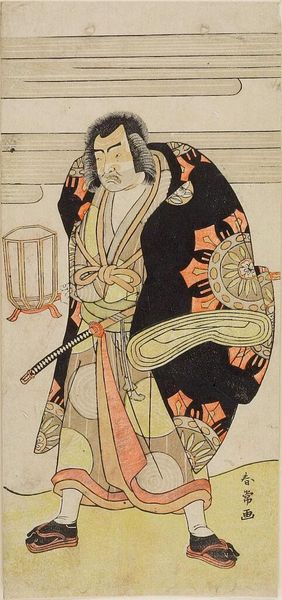
print, woodblock-print
#
portrait
#
narrative-art
# print
#
asian-art
#
ukiyo-e
#
figuration
#
woodblock-print
#
history-painting
Copyright: Public domain
Editor: This woodblock print by Utagawa Kunisada depicts "Father and Son Members of the Forty Seven Rōnin from Chūshingura." The figures are intensely expressive and feel incredibly powerful. How do you interpret this work in light of its historical context? Curator: I see this print as deeply intertwined with themes of loyalty, sacrifice, and social justice. The story of the 47 Ronin, deeply embedded in Japanese culture, has always been about challenging abuses of power, isn't it? Kunisada is not just depicting figures, but embodying complex sociopolitical messages about duty in feudal Japan. We can question to what extent does it serve to re-entrench the structures, or critique and potentially subvert it. What does the narrative accomplish? Editor: I never thought about the challenging abuses of power! Now I am curious... With these power imbalances, does it suggest some subtle form of social commentary woven into the artwork, perhaps about the tensions between duty and personal freedom? Curator: Absolutely. Think about the Edo period context when this print was created, a time of rigid social hierarchies and the rise of the merchant class. These Rōnin, while upholding feudal obligations, become folk heroes who question rigid top-down rule. This image could have acted as a catalyst for considering ethics in times of social change. Editor: So the artist almost turns them into symbols of resistance... Curator: Indeed. It also seems vital to look at this as more than a simple celebration. Can we look for what may be subtle hints of irony or commentary, encouraging audiences to question everything from the rigidity of tradition to the nature of heroism? In an age of growing socio-economic unrest. Were these folk stories then merely tales for a docile public or stories for a potential resistance? Editor: This completely shifts my perspective. I had been so focused on the aesthetics that I missed the layers of social meaning woven into it. Curator: That’s the exciting part of art history, right? Going beyond the surface to unpack its cultural impact and legacies. Editor: Definitely. It gives me a whole new way to think about art's role in reflecting and influencing society.
Comments
No comments
Be the first to comment and join the conversation on the ultimate creative platform.
